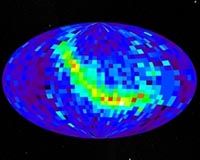 |
Washington DC (SPX) Oct 22, 2009 Astronomy enthusiasts across the globe are breaking out their telescopes this weekend (October 22-24) in a coordinated effort to help hundreds of thousands of people experience their own "Galileo moment" of awe and discovery when seeing the planet Jupiter and its four largest moons. More than 800 public observing events in over 50 countries are being organized as part of "Galilean Nights," a cornerstone project of the International Year of Astronomy 2009 (IYA2009). More than 75 events in the United States are listed on the international Galilean Nights Web site "Our goal is to enable people of all ages to share the wonder of the night sky by seeing the same objects that legendary Italian astronomer Galileo Galilei first observed scientifically four centuries ago," says Douglas Isbell, the U.S. national Single Point of Contact for IYA2009. "We hope to give many people their first glimpse of the marvels of the Universe through a telescope, showing them breathtaking sights such as the cloud bands of Jupiter, and the rocky desolation of craters and mountain ranges on our Moon." Large U.S. events are being planned for Inwood Hill Park in New York City and Hilo, Hawaii, for example. A wide variety of other events are scheduled at places as diverse as a Starbucks coffee shop in Alabaster, Alabama; Wilhemina State Park in Mena, Arkansas; the Amoeba music store in Hollywood, California; Colorado Astronomy Day in Brighton and Chamberlin Observatory in Denver; the Embry-Riddle University observatory in Daytona Beach, Florida; sidewalk astronomy at the corner of North and Wells streets in Chicago; a Radio Shack in Waterloo, Iowa; Chabot Science Center near Oakland; a Border's Bookstore in Wichita, Kansas; the Longway Planetarium in Flint, Michigan; Bottomless Lakes State Park in Roswell, New Mexico; the University of Texas Arlington planetarium; the Great Salt Lake Nature Center in Utah; the Carnegie Institution of Washington, DC; and the Green Bank Science Center in West Virginia. As well as looking at our planetary neighbors through a telescope, people are encouraged to photograph what they see and share the sights with the world through the Galilean Nights astrophotography competition. Photographers of all levels of experience are enthusiastically taking part in the competition as they try to produce their own captivating photographs of the Universe. Anyone with a camera and an appreciation of the night sky can take part. In addition to these activities, several observatories are making their facilities available to the world for remote observing sessions, allowing people to take photographs of astronomical objects from their own personal computers. The Web site also includes lots of resources and downloadable materials for organizations interested in hosting their own events, such as the logo in numerous languages, information on sky objects, and pre-prepared presentations. "Please register your events and report back to us with your results so we can make a good estimate of how successful the event was around the world," Isbell adds. The vision of the IYA2009 is to help the citizens of the world rediscover their place in the Universe through the day and night-time skies the impact of astronomy and basic sciences on our daily lives, and understand better how scientific knowledge can contribute to a more equitable and peaceful society. The cornerstones and special projects of IYA2009 aim to stimulate worldwide interest, especially among young people, in astronomy and science under the central theme� "The Universe, Yours to Discover." IYA2009 events and activities hope to promote a greater appreciation of the inspirational aspects of astronomy that embody an invaluable shared resource for all countries. Share This Article With Planet Earth
Related Links Galilean Nights Website IYA2009 Astronomy News from Skynightly.com
 IBEX Explores Galactic Frontier, Releases First-Ever All-Sky Map
IBEX Explores Galactic Frontier, Releases First-Ever All-Sky MapWashington DC (SPX) Oct 16, 2009 NASA's Interstellar Boundary Explorer, or IBEX, spacecraft has made it possible for scientists to construct the first comprehensive sky map of our solar system and its location in the Milky Way galaxy. The new view will change the way researchers view and study the interaction between our galaxy and sun. The sky map was produced with data that two detectors on the spacecraft collected ... read more |
|
| The content herein, unless otherwise known to be public domain, are Copyright 1995-2009 - SpaceDaily. AFP and UPI Wire Stories are copyright Agence France-Presse and United Press International. ESA Portal Reports are copyright European Space Agency. All NASA sourced material is public domain. Additional copyrights may apply in whole or part to other bona fide parties. Advertising does not imply endorsement,agreement or approval of any opinions, statements or information provided by SpaceDaily on any Web page published or hosted by SpaceDaily. Privacy Statement |